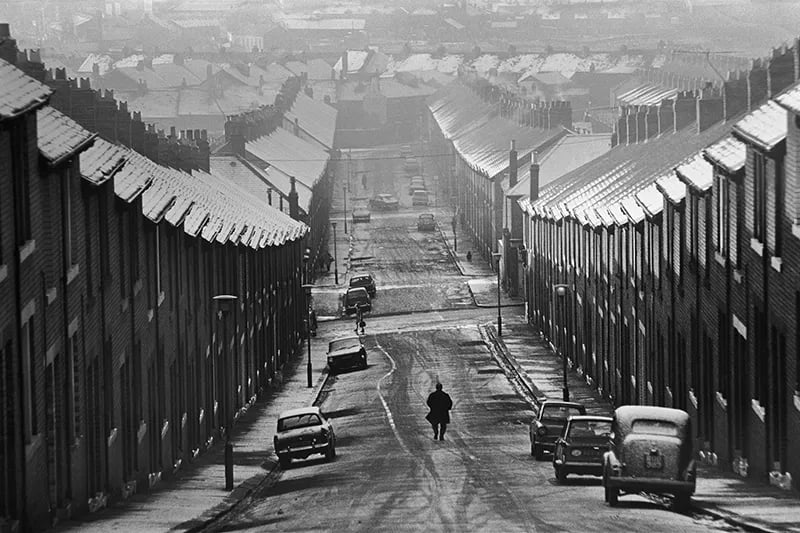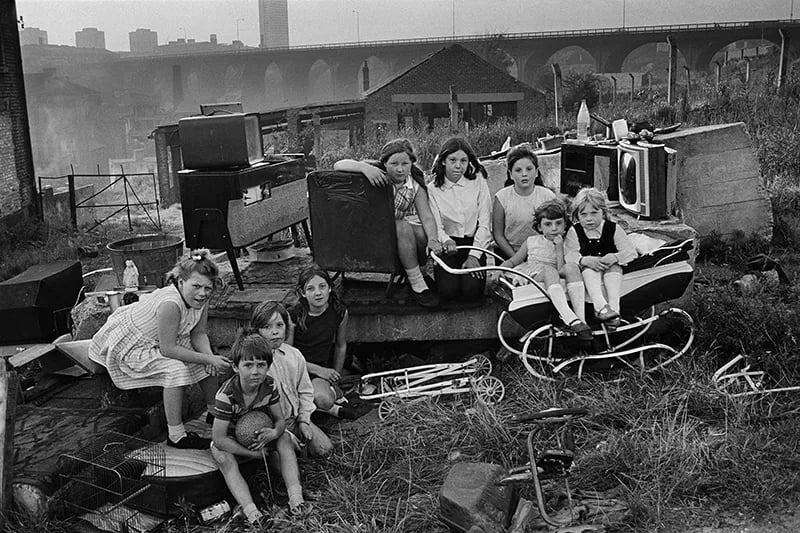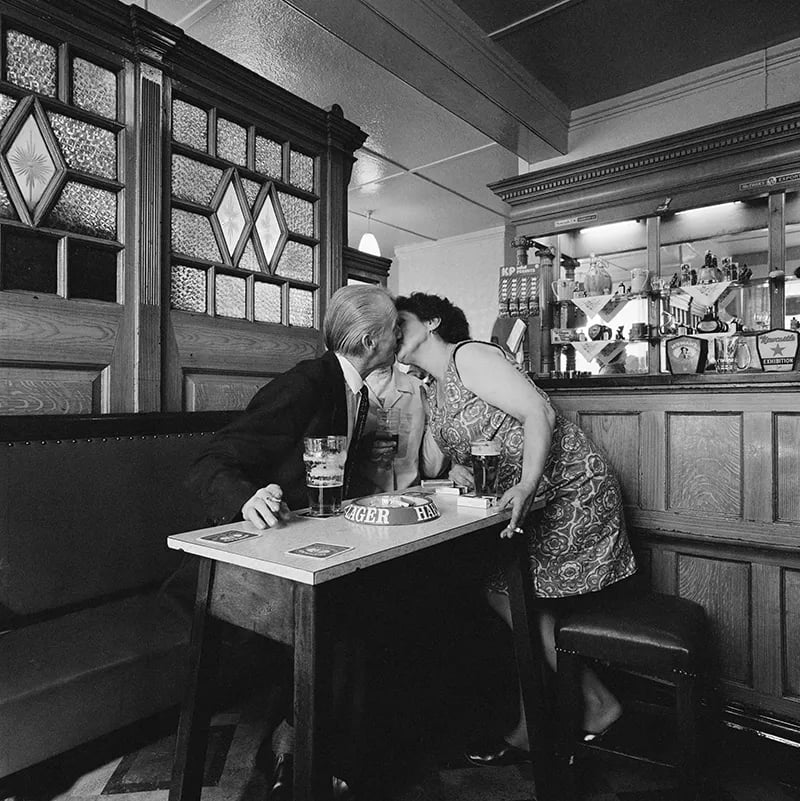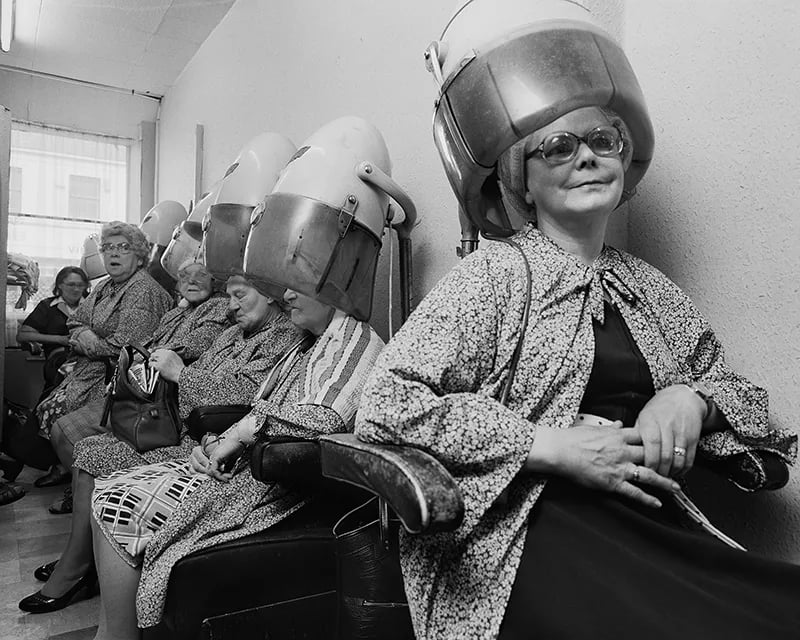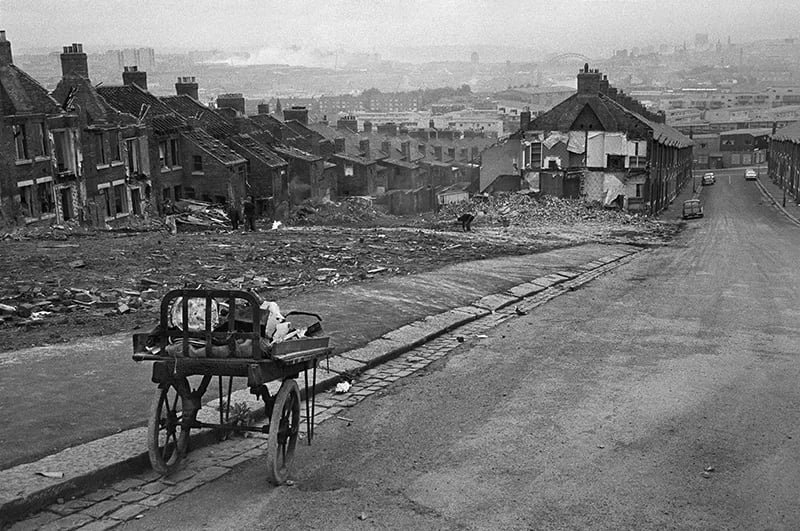In this month’s blog post we look at a new edition of Sirkka-Liisa Konttinen’s classic Byker, a book that looks at the destruction/development of the Byker community in Newcastle-Upon Tyne.
Image: from Sirkka-Liisa Konttinen’s Byker
In post-war Britain, the industrial cities of northern England were a chaos of destruction and construction. One of the huge social experiments of the 1960s and 1970s was the clearance of inner city slum housing. In its place, shiny new tower blocks were erected. When these new flats were well-designed, the improvement in housing standards was welcomed. However, often build quality was low, and few thoughts were given to infrastructure or the social networks that were destroyed in the move from low-rise to high-rise.
And there to photograph it were a host of photographers; Martin Parr, Daniel Meadows, Raymond Depardon, Peter Mitchell, Paul Trevor to name just a few photographers with varying approaches.
Improve your knowledge of historical and contemporary photography with an online, part-time photography degree from Falmouth Flexible:
In the 1980s and 1990s John Davies made large-format images of Britain’s new cities, his photobook described by Owen Hatherley in the New Ruins of Britain as a book containing "...astounding photographs of usually derided, master-panned postwar landscapes - the chaos of intersections in Herbert Manzoni's Birmingham, the meticulously planned hillscape of J.L.Womersley's Sheffield - taken from the planner's vantage point. That is, from above, seemingly either from the top of a tower block (where the perspective is supposedly bleak and isolating) or an office block (where it is the perspective of the lord of all he surveys). These images combine a certain stillness with a barely suppressed charge of excitement."
That is the high view, the spectacle view, the planning view. Davies’ images are both spectacular but also instantly recognisable, integrating planning into a broader topographical representation.
Image: from Sirkka-Liisa Konttinen’s Byker
Sirkka-Liisa Konttinen provided a very different view in her images of the Byker neighbourhood of Newcastle-Upon Tyne. Her long-term documentation of Byker Grove in Newcastle, showed the wealth of working class life and culture in the decaying terraced housing of the area before these neighbourhoods were redeveloped and much of that culture was lost. Byker Grove is shot in black and white and captures a neighbourhood that is filled with emotion and energy.
Konttinen worked with the Amber Collective (where Chris Killip and Graham Smith also worked) and the idea of community is right at the heart of her work. The book (the new edition is a cloth bound thread-sewn binding upgrade on the original bound original) comes with text that details residents’ reactions to both Konttinen and the images she made of a redevelopment that ostensibly put residents’ interest first, that was hailed internationally as a community-based redevelopment. ‘What the planners and architects are striving for… is to keep the way of life, the same faces and families together, only housed in new surroundings,’ read one newspaper article.
Image: from Sirkka-Liisa Konttinen’s Byker
'She’s left home,’ (neglecting her duty towards her parents). ‘She comes from Finland, such a beautiful place, nice and clean, and she chooses to live in Byker. (what’s the matter with her?) And a year later. ‘She hasn’t got her nets up yet. She plays the piano; she drives a van (thundering scrapheap, never seen a bucket of water), and rides a rusty bicycle (she rides anything, her!). She goes round taking photographs, and gives them away for nowt (is she a snoop for the ‘Dole@, or just a mugh?) … A cannot understand a word of what she says either. But she’s all right – canny, aye. Poor little bairn, so far from home… And is she even married to that man…?’
The pictures are quiet moments from the pubs, the cafes, the streets of Byker. They have an intimacy to them, a sense of being there that is the hallmark of Amber photographers. Her image of the girl in her sequinned dress, hair flying as she rides her spacehopper is an iconic example of the joyfulness of life, her pictures of men and women drinking, and laughing, and sitting in pubs and clubs and cafes are relaxed, familiar and revealing of how people live in a space.
Image: from Sirkka-Liisa Konttinen’s Byker
She shows women at home washing the dog, or ironing the sheets. There are bedrooms, living rooms, and the most wonderful portraits; a women with hair piled up on top looking out to the left as she poses in her white woollen coat, the picture of the bingo-goers in their headscarves ticking off the numbers in the repurposed cinema.
Image: from Sirkka-Liisa Konttinen’s Byker
And there are the images of the streets of Byker. The lines of terraces are shown stretched out, the tiles on the roof shining in the drizzle, the back alleys a contrast to the finely kept front doors and windows (the domestic routine is detailed in the text). There are butchers, hairdressers, communal wash areas, and then slowly but surely the destruction begins. Houses are knocked down, piles of rubble appear, derelict buildings are emptied and scavenged for anything that might be of value. In this twilight world, the stress of life for remaining residents becomes unbearable.
‘They come in through the roof’, writes one tenant. ‘Over 17,000 people lived in Byker at the start of the redevelopment,’ reads the afterword. ‘Fewer than 20 per cent of them were living in the new Byker by 1976. One is only left to speculate what would have happened had the policy not been to retain the community.’
Image: from Sirkka-Liisa Konttinen’s Byker
Read more about Photobooks in previous blogs:
- The Grid: Bringing Order, Comparison and Narrative to the Story
- Laia Abril and Rafal Milach: Windows on the world of Misogyny
- Women and Photobooks: Unwriting History
- Photobooks and Collaboration
 Colin Pantall is a photographer, writer and lecturer and teaches on the MA Photography programme at Falmouth University.
Colin Pantall is a photographer, writer and lecturer and teaches on the MA Photography programme at Falmouth University.
.webp)
